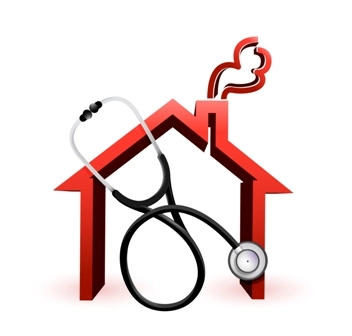Keep Cool With These Heat-Related Encounter Coding Tips
Tip: Comorbidities can help you accurately assess MDM. With temperatures rising, you may be seeing a spike in heat-related encounters. Underlying illnesses, medications, and other factors often complicate diagnosis and play a role in the coding process. Consider the following example and expert insight as your Part B practice deals with patients struggling with heat-related conditions. Case study: An obese patient with documented heart disease and diabetes comes in to see the primary care practitioner (PCP) feeling light-headed, nauseated, and fatigued. The patient reports having been at a picnic all day. Patient also has a rash on his chest, elbow creases, and groin. PCP spent several minutes assessing the patient’s heart rate, and rectal core temperature read 104 degrees F. PCP helped the patient cool down with cool compresses and talked with the patient about proper sun exposure practices. The diagnosis is heat exhaustion and heat rash. Topical medication is prescribed for the rashes, light physical activity and increased hydration was recommended, as well as follow-up in a week if rashes persist. Keep reading to see how comorbidities affect medical decision making (MDM) leveling. Start With What You Know Definitively The ultimate diagnoses for this encounter are stated in the documentation and coded as T67.5XXA (Heat exhaustion, unspecified, initial encounter) and L74.0 (Miliaria rubra), commonly referred to as heat rash. The PCP has also documented the symptoms for which the patient presented: light-headedness, nausea, and fatigue. We know from ICD-10-CM Official Guidelines, Section I.B.5, that “Signs and symptoms that are associated routinely with a disease process should not be assigned as additional codes, unless otherwise instructed by the classification.” In this case, “light-headedness, nausea, fatigue, and the elevated body temperature are all routinely associated with heat exhaustion and therefore should not be coded separately,” says Donna Walaszek, CCS-P, billing manager, credentialing/coding specialist for Northampton Area Pediatrics LLP in Northampton, Massachusetts. Know When to Report Comorbidities Identifying the existence of certain medical conditions and medication use and treating the patient appropriately and promptly is the key to preventing more serious illness, according to the American Academy of Family Physicians www.aafp.org/pubs/afp/ issues/2019/0415/p482.html. Among these factors is obesity, “as it can affect the body’s ability to regulate temperature,” explains Walaszek. Comorbid conditions such as obesity, heart disease, and diabetes should be reported even though the patient didn’t come in for those reasons. A comorbid condition affects the patient concurrently without it being the cause of the problem being treated. For example, diabetes puts the patient at higher risk of dehydration, and dehydration puts a patient with heart disease in greater danger than an average person. This could all impact the MDM for a heat exhaustion encounter, so you’ll need to code them to support a higher level for the evaluation and management (E/M) service. “I would also be inclined to report the heart disease and diabetes if the patient is taking a medication that may affect the body’s ability to stay hydrated, such as diuretics,” she continues. The patient record should make mention of comorbidities and said medications, but if anything is unclear or contradictory, always query the provider. In this case, if medications are part of the patient record, you’d need to report codes such as the following to capture the patient’s relative comorbidities and other factors impacting MDM: Note: Be on the lookout for Code first and Use additional notes. For example, when coding from E66.-, coders are instructed to code first O99.21.- (Obesity complicating pregnancy, childbirth, and the puerperium), if applicable, and to use an additional code from the Z68.- (Body mass index [BMI]) group, if the BMI is known. Pay Attention to the Details to Determine MDM In this case study, for the Number and Complexity of the problems addressed, the obese patient has an acute illness with systemic symptoms. The patient’s core temperature was at 104 degrees F, which means immediate action is required to cool the body down. Physicians know that heat exhaustion can lead to heatstroke, which is life-threatening. The severity of potential consequences will affect MDM, and ideally the notes from the visit will outline that. The case study also mentions prescription drug management for the heat rash, which would put the patient at moderate risk in the Risk of Complications and/or Morbidity or Mortality of Patient Management column of the MDM table. Since the encounter needs to satisfy two of the MDM table’s requirements for a given level, you’ll want to code the encounter at a moderate level. “Based on all of these reasons, I would feel comfortable coding this as a 99214 for an established patient,” Walaszek says. Expert tip: Age can also play a role in condition severity — and therefore MDM. “The body’s ability to regulate its temperature isn’t fully developed in patients younger than 4 and may be reduced by illness, medications, or other factors in those older than 65,” explains Walaszek. Query the Practitioner if the Notes Are Unclear Patient quality of care is on the line, and so is reimbursement. Practitioners care about both, but don’t always realize their notes are vague. “I do a lot of auditing, and so I read a lot of practitioners’ notes. Many of them are still documenting for the 95-97 guidelines. It’s all history and physical examination (H&P), and that just doesn’t matter anymore when it comes to reporting and documenting the level of office/outpatient evaluation and management service. You must put down everything you’re thinking to prove the work that you’re doing,” says Barbara J. Cobuzzi, MBA, CPC, COC, CPC-P, CPC-I, CENTC, CPCO, CMCS, of CRN Healthcare in Tinton Falls, New Jersey. “The practitioners should be documenting even the things they’re ruling out. The entire thought process should be documented because doctors do get credit for that,” she adds. “All providers are different, but if you can identify key pieces of information that will impact their reimbursement, they are likely to listen,” Walaszek adds.





